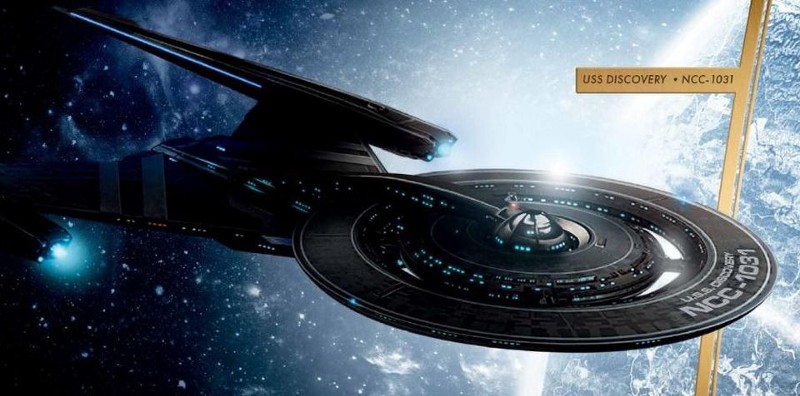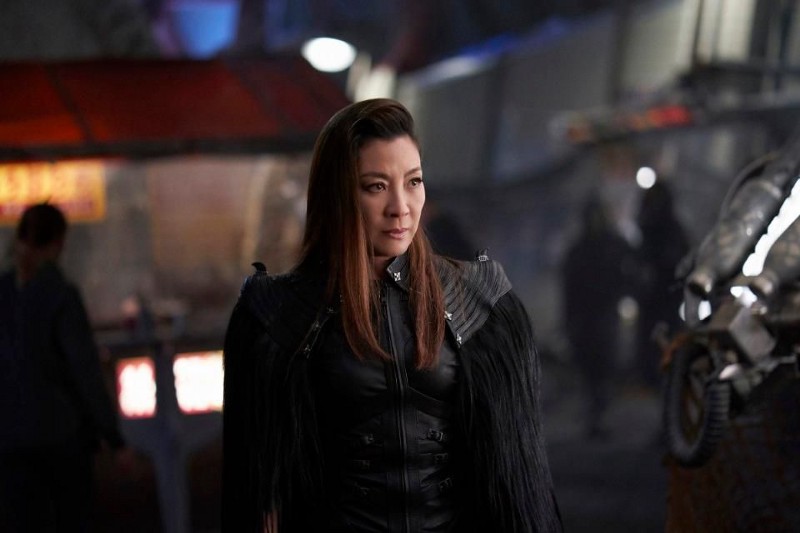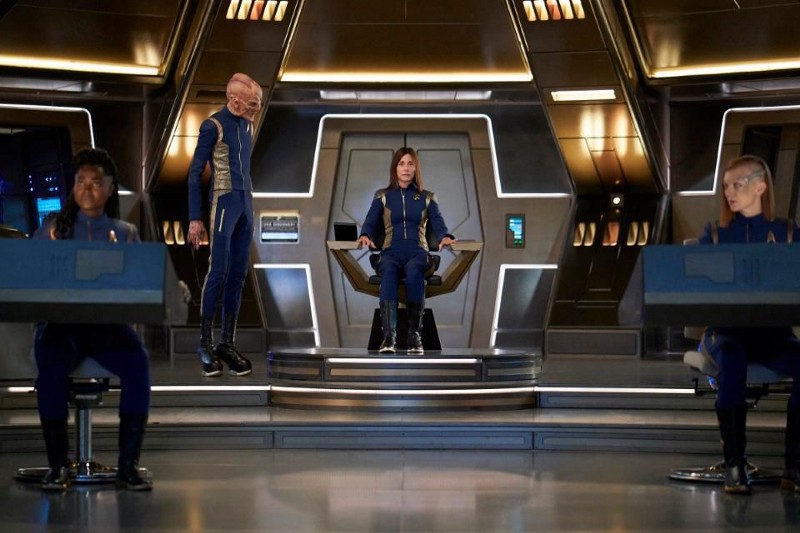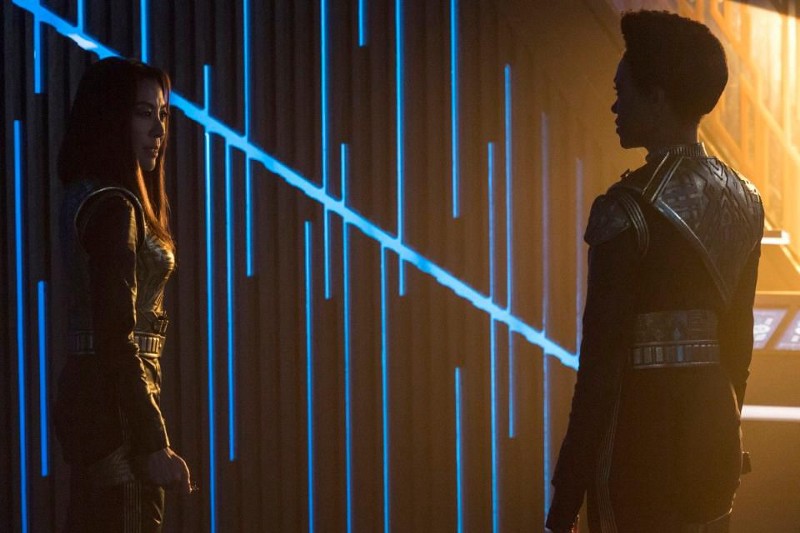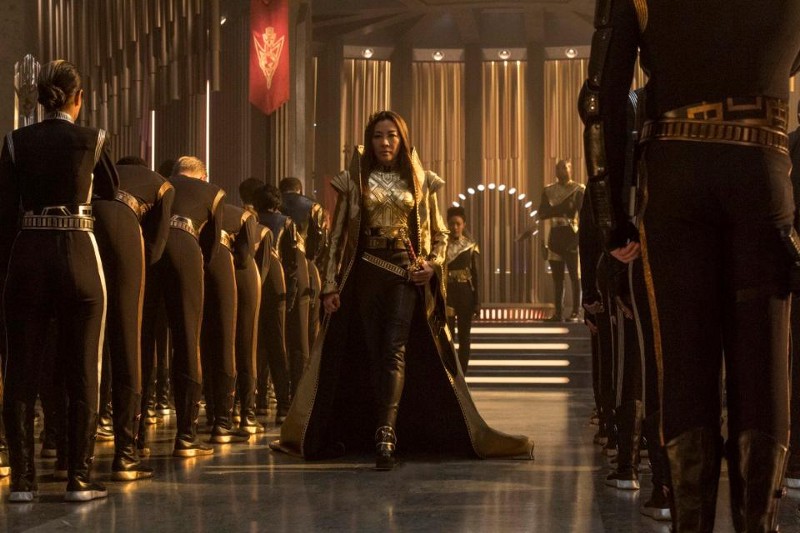Star Trek: Discovery Goes Inside The Mind, Body, And Enemy On ‘The Wolf Inside’, Season 1 Episode…

The deep dive into the mirror Universe, and the ethics of how we deal with purity and diversity, is just getting started.
Life in the mirror Universe isn’t easy for anyone. Culber has been killed by a mentally-breaking-down Tyler, who cannot hold his Klingon origins inside any longer. Burnham struggles with the necessity of murdering so many, unjustly, in her long-sought-after role as Captain. Lorca is being continuously tortured; Tilly is helpless as Stamets’ mind degrades; Saru fruitlessly searches for information on the USS Defiant, seeking to return their crew back to their own Universe. Yet the greatest challenge remains the struggle to reach and understand the Klingons in their own Universe. The long-term hope remains the same: to broker a peace. ‘The Wolf Inside’ brings us a step closer, introducing some new science and raising some big ethical, right-and-wrong questions with no clear answers.
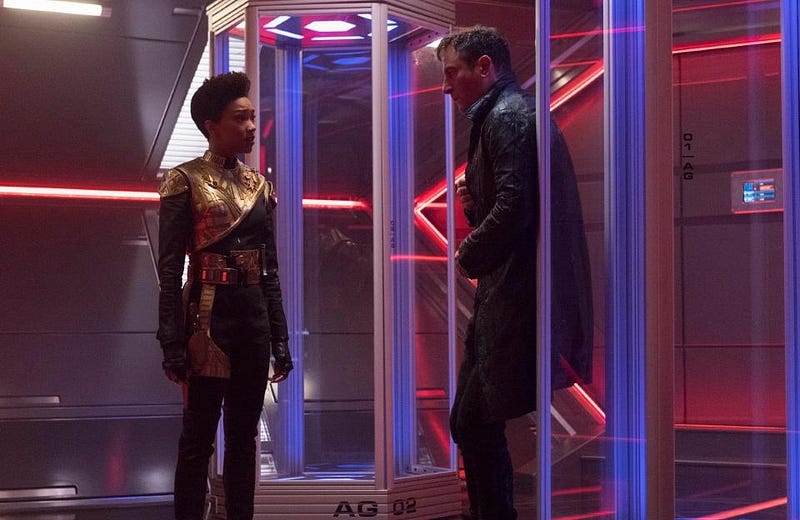
Recap: Burnham, in command of the Terran Empire’s Shenzhou, has no choice but to brutally send rebel after rebel to their death. When the order comes down to destroy the Firewolf — the Klingon leader of the resistance — Burnham sees an opportunity no one else does. While Lorca gives a completely expected recommendation, “Sometimes the end justifies the terrible means,” Burnham wants to find out how this Klingon became the leader of a coalition of non-Klingons. How can a Klingon do such a thing and still maintain their honor; how can they “remain Klingon” while simultaneously accepting and working with others who are so different? It’s the ultimate plot point, and Burnham sees it as the solution to her Universe’s indecipherable conundrum.
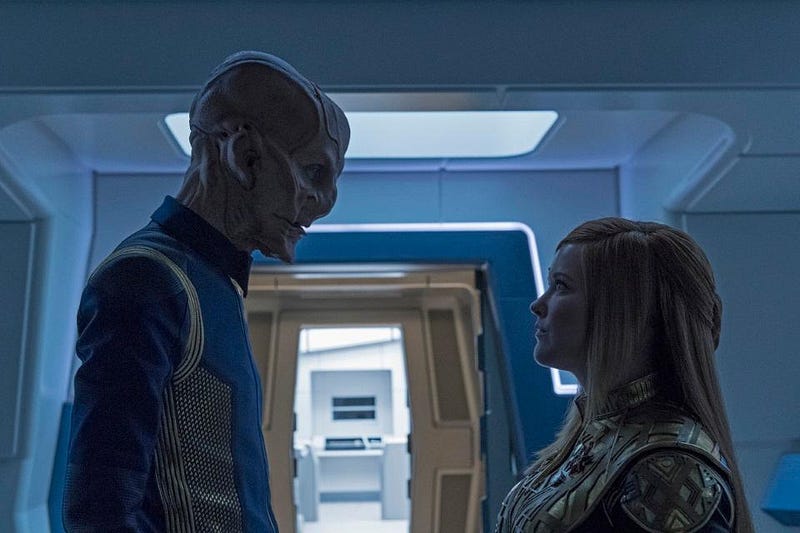
Stamets, meanwhile, remains the only surefire hope for returning the crew of Discovery to their original Universe. As revealed by Tilly, however, his mind has degraded, and what lies before them no longer seems to be Stamets. It’s almost as though his brain has been entangled with the tardigrade and the spores, and what remains is now no longer wholly any one of the three entities. Tilly has the idea of using the spores to try and repair Stamets’ mind — to put the mycelium network inside of him — with unclear risks and results. Meanwhile, Burnham executes her plan, beaming herself and Tyler to the surface to negotiate with the resistance. And who does she meet on the surface? Voq: the Firewolf. And who happens to be in his coalition? This Universe’s Sarek.
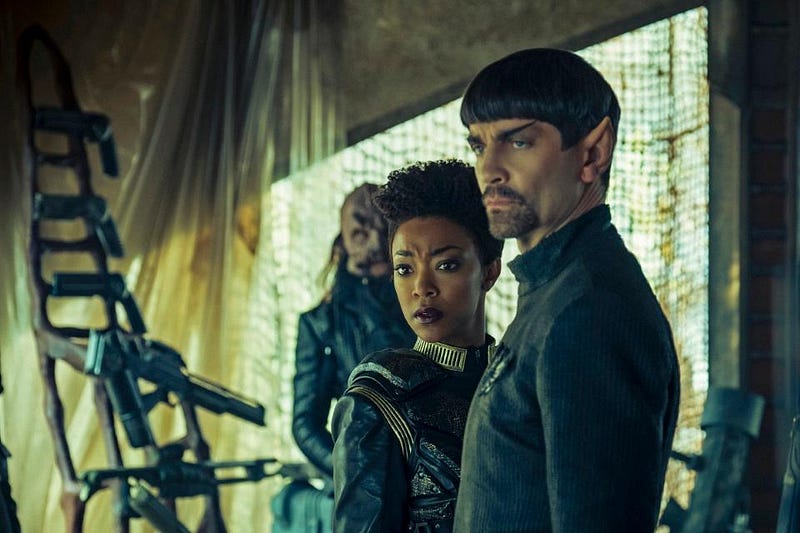
After warning the Firewolf of the impending destruction of their site, helping them to survive, Burnham confronts the Firewolf’s ideology with what she knows about the Klingons. As he explains embracing a mix of purity (within his own group) and diversity (to achieve a broader end), the inner workings of Tyler simply break, and the memories of Voq (and his memories of T’Kuvma) can no longer remain buried, and he leaps into action to attack the Firewolf with a cry to “Remain Klingon or die!”
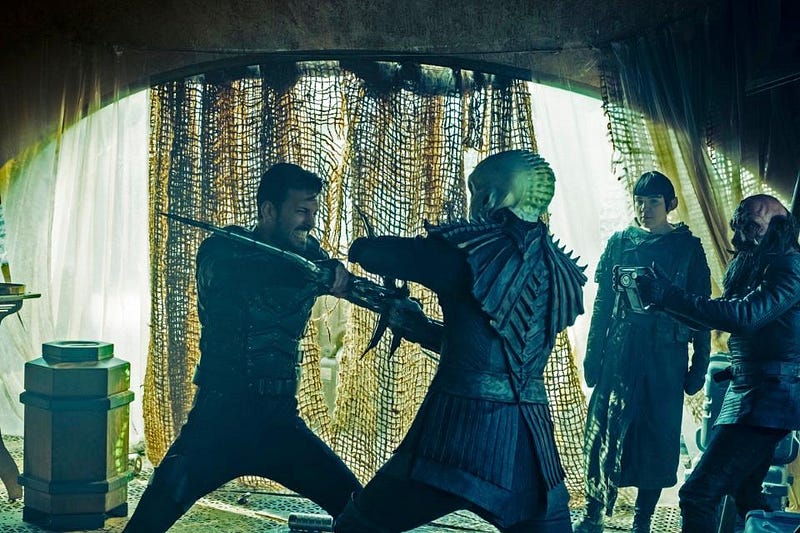
After a scuffle, Tyler/Voq is defeated, and he and Burnham are returned to their ship. The crew, meanwhile, is suspicious of Burnham’s reluctance to bomb the resistance. It puts her at great risk of blowing her cover.
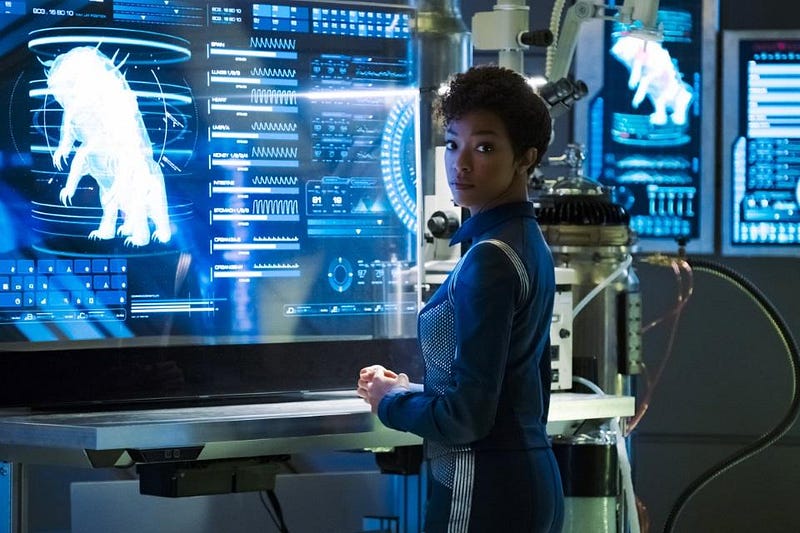
Tilly’s attempt to merge the spores with Stamets is not very successful, as his mind fails to emerge intact and his body starts to die. Saru calls in the medical team to save his body; the fate of his mind is undetermined. Burnham and Saru orchestrate a plan to beam the traitor Tyler into space, to surreptitiously save him, while also keeping him as a prisoner on Discovery. All is revealed about who Tyler is: his fight aboard the Ship of the Dead with Burnham, the witnessing of the death of T’Kuvma, and his true identity as Voq: son of none, the torchbearer. He may turn out to be the key to peace, if Discovery can ever make it back to their own Universe. Meanwhile, something is occurring in Stamets’ mind; something about him is starting to find his way.
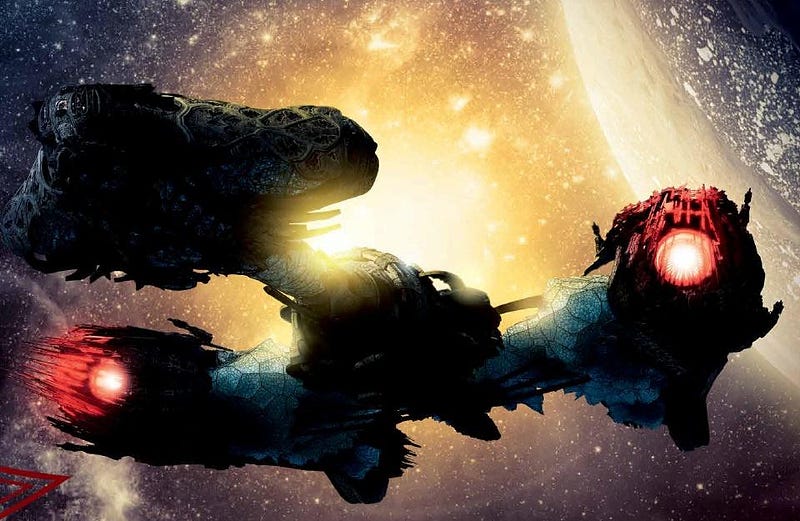
In the end, though, Burnham’s hesitation and delay in firing on the resistance base may turn out to be the only action that matters, as the Emperor arrived, firing a spread of torpedoes. As the hope for the resistance vanish in a haze of Terran Empire explosives, the Emperor reveals herself to the once-again-treacherous Burnham. It’s Philippa Georgiou, alive, well, and supremely ruthless. Despite all they’ve learned, this could be the demise of their grand plan. The one hope? Along with Tyler, a message was smuggled to Saru aboard Discovery: the Terran Empire’s classified data on the USS Defiant, and potentially the key to finding their way home.
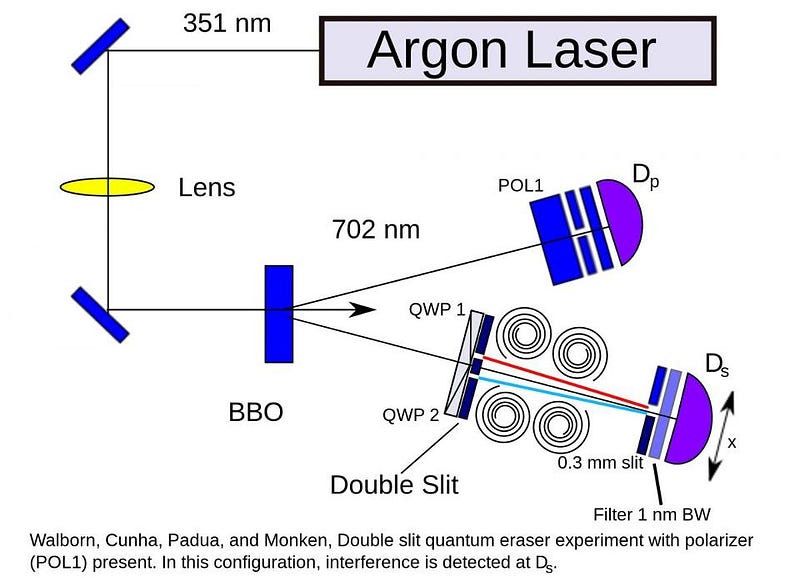
The Science: We know so little about quantum biology here in our own world, having mere hints that the fundamental indeterminism inherent to reality is interconnected with the ways living organisms actually behave. Is human consciousness an inherently quantum phenomenon, or can it be explained classically? Can birds find their direction through quantum magnetoreception with Earth? Photosynthesis and human vision both rely on single photon-electron interactions; is that quantum “enough” for us? And does enzymatic activity require the tunneling of electrons across improbably large distances? While quantum biology is a real science, as individual particles and their interactions play a role in life processes, these phenomena are limited, and it isn’t clear they leverage weird behavior like entanglement or indeterminism.

What it looks like is happening in Stamets’ mind is that neurons are firing to nowhere, but perhaps “nowhere within the mind” or “nowhere within this Universe” means that his mind has a trans-dimensional, spore-driven connection to this odd network spread throughout multiple parallel Universes. Stamets’ mind may be the link between where they are now and their original Universe, and, in theory, anyplace where these spores have a quantumly-entangled network. With the assistance of the spores, something is happening inside Stamets, and he appears to have his first clue towards finding his way back to sanity and consciousness.
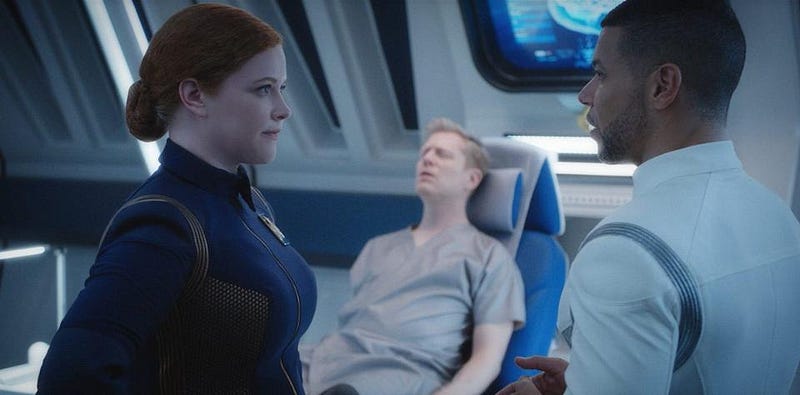
This is interesting, but also extremely speculative. How can you have entanglement between more than two particles in a system, simultaneously? How do you use quantum entanglement to do information transfer, something that we have a theorem forbidding? And how do you spread out a human mind across multiple Universes? The biggest problem is that for an individual particle, you can either measure its quantum state, maintaining entanglement, or you can force it into a certain state, breaking the entanglement. There’s no way to transfer information, send a message, or affect the distant location from your own in this fashion. It simply shouldn’t work, yet this is the great hope of Star Trek: Discovery’s spore-based biophysics. Color me skeptical.
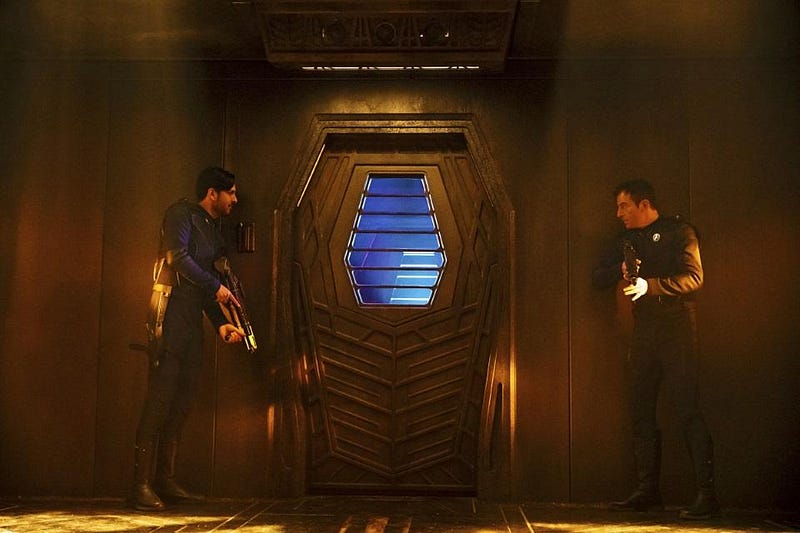
I’m less skeptical, however, of the bioengineering performed on Voq/Tyler. Was there ever a real “Ash Tyler” at all? Was he a real person that was captured and merged with Voq? Or was he a complete fabrication; did Burnham fall in love with the Discovery version of Minuet: an alien concoction designed to fool one of the main characters? No matter; at a fundamental level, the mind appears to work by activating various regions of the brain to reconstruct memories, determine reactions, and make decisions. Could a mind hold memories of different identities within the same bodies? I don’t see why not. It may be ethically questionable, but in principle, it should be scientifically well within the realm of possibility.
Whether the original personalities can ever be extracted, assuming there are two, is a much more questionable proposition, like unscrambling an egg. We’ll have to see what the future holds!
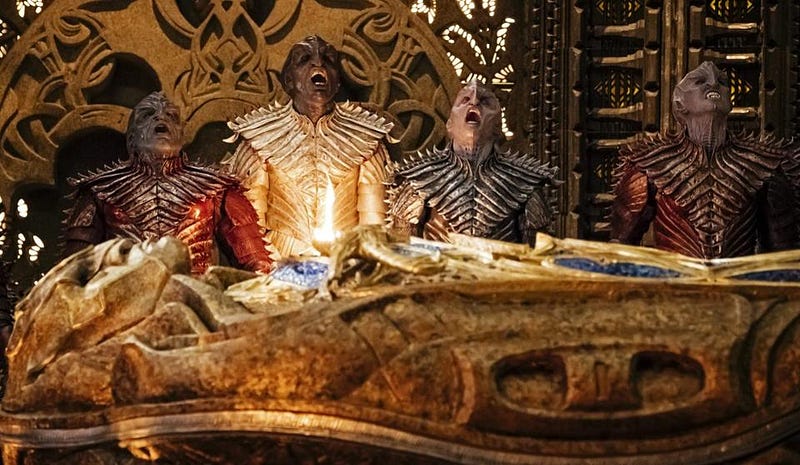
Right and Wrong: Not only does Burnham have to wrestle with what she’s done, both in her own real life and in this “alternate” Universe, but with the awkward feeling of being doted on by the servile, likely-enslaved version of Saru in her Captain’s quarters. The decision to try and gain information from the Firewolf, rather than carrying out the orders of executing the leaders of the resistance, is perhaps a noble one, but it’s a risky one. And the decision not to attack Tyler and defend the Firewolf seems the most bizarre one of all. (Does no one watch Lawrence of Arabia in the 23rd century?) The words of Sarek, in my opinion, should not be sufficient to excuse Burnham’s inactions at this critical moment. It’s as though she doesn’t see the tremendous risk Voq is taking in trusting her, and as Tyler defiles that trust, she does nothing to help.
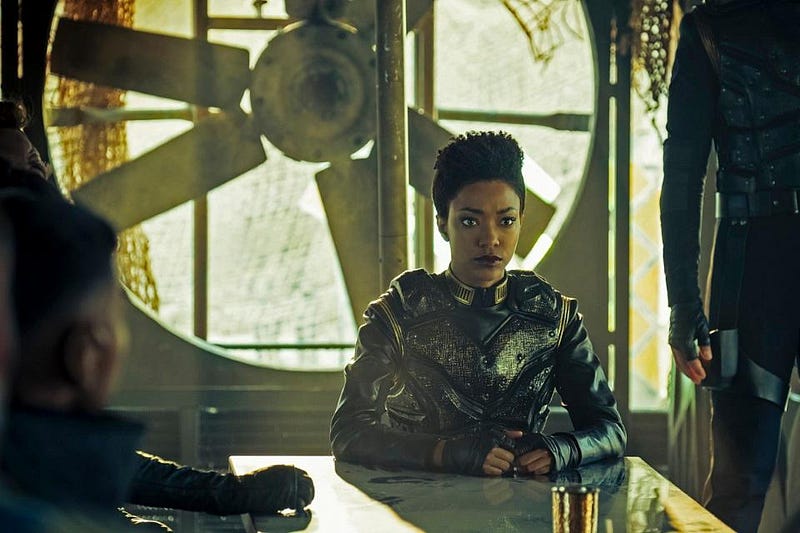
This doubles up in her quarters, when she doesn’t pull the trigger on her phaser to disable the now-in-control Voq. I have long been puzzled by Burnham’s rash reactions on one hand, and her paralyzing non-reactions on the other. Yes, human beings are flawed, but this is one lesson I am very, very sick of her failing to learn. It’s only through dumb luck that she has not yet faced the consequence of death for this. It’s clear that she’s struggling with becoming an inhuman monster, but unlike Lorca, I’m not certain she realizes how important survival is in the ethical battle going on inside of her.
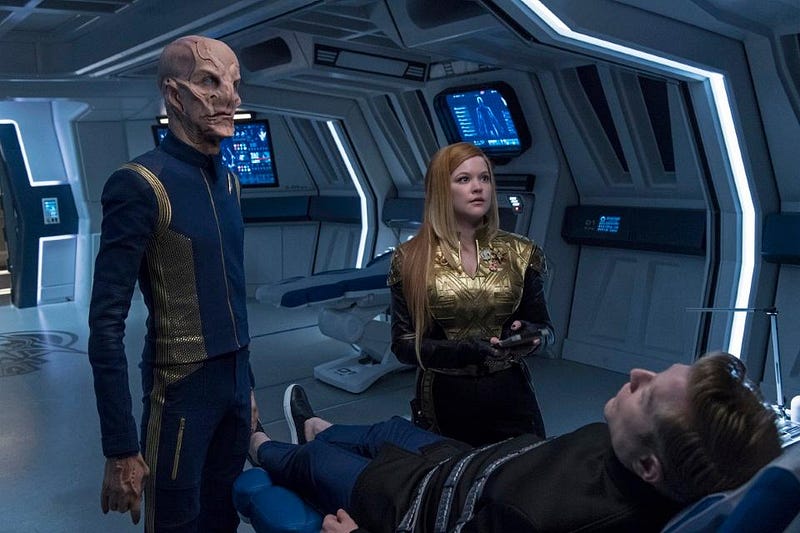
Tilly, too, encounters her own ethical conundrum: perform a high-risk biological experiment to try and save Stamets, or allow his body to stay alive at the cost of his mind? It’s easy to say, “well, take the chance to fix him, because the alternative is certain doom,” but that’s not the case. There are many cases where waiting until you know more, especially in a situation when you’re gathering new information, is the optimal route. Things work out this time, but there were no guarantees.
Finally, Saru continues to act as the moral compass of this show: caring for his crew, working to ensure their survival, and holding everyone accountable for the success of the mission. Ironic, isn’t it, that the most ethical character in the show is the one portrayed as the most fearful and cowardly? It puts a new spin on what it means to be a “hero” in this incarnation of the Star Trek franchise, and one that I’m quite happy to see.
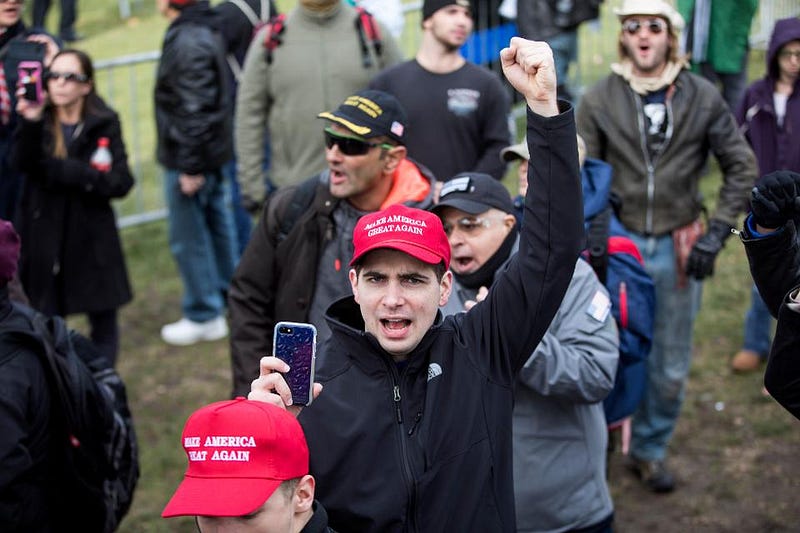
But my favorite part of this episode is the clear dichotomy between two opposing principles playing out in our society today: the battle between diversity and purity. How do you strike the balance between maintaining your cultural identity, learning about and respecting your heritage, while simultaneously integrating with a larger, more diverse community that doesn’t always represent you? The mirror Universe version of Voq has put a tremendous amount of thought into this, delivering some of the best lines of the show so far, lines that could be spoken with respect to confederate statues; to protesting the government; to peaceful assembly; to the silencing of dissent. It is the power of Star Trek to hold a mirror up to society and show us issues that are extremely personal to us in a new light that help give society hope.
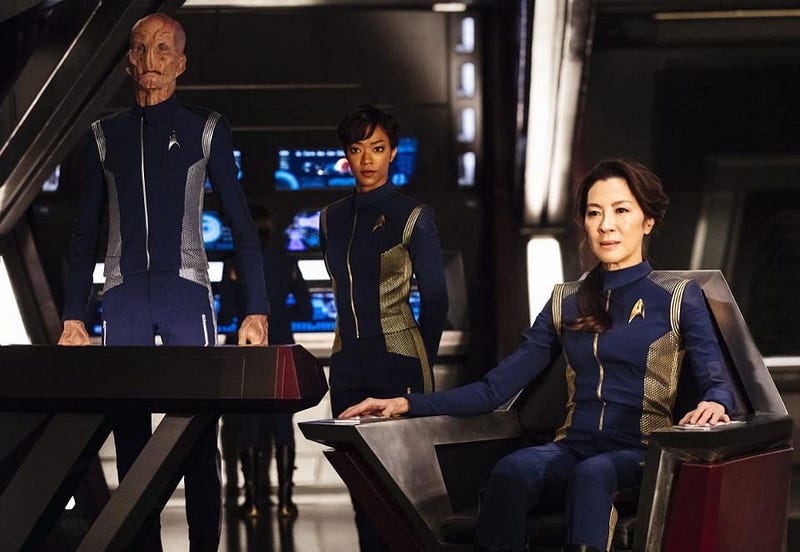
The… Commercials?: Okay, CBS All Access, how old do you think your audience is? Your online channel offers us continued advertisements for the unappealing fast-casual restaurants we grew up hating; for the television services we cut the cord to as adults; for rheumatoid arthritis medications; for reality shows like Survivor and The Amazing Race that were on the air some 15 years ago. The flash games that I play, even the ads that YouTube shows me, seem to be linked to at least my own demographic. The commercials I used to see as a kid watching “The Price Is Right” some 30 years ago were more relevant to my life than these are.
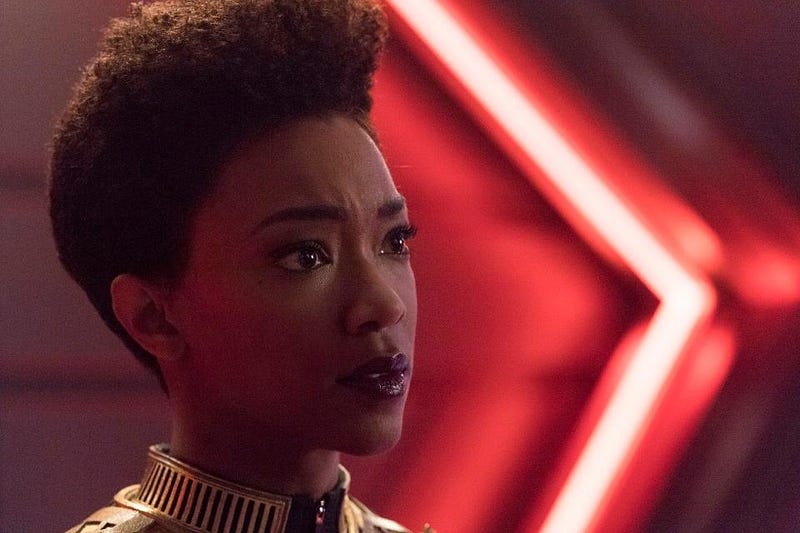
Conclusion: We’re used to characters making great decisions in impossible situations, and having that be what carries them through to a successful outcome. We’re used to them knowing something we don’t, until the great reveal shows that they were brilliant all along. Star Trek: Discovery flips the script on that, giving the audience knowledge that no one in the series has. We see a set of reasonable paths forward, and watch in abject horror when characters make incredibly flawed decisions. I fully expect Burnham to suffer a terrible, possibly deserving fate at the hands of Georgiou on the next episode, and for the crew to figure out the truth about Tyler/Voq, and to use him as the key for peace. If they can crack the Defiant’s mystery, and/or get Stamets back, this unlikely team of misfits could end the war in their own Universe.
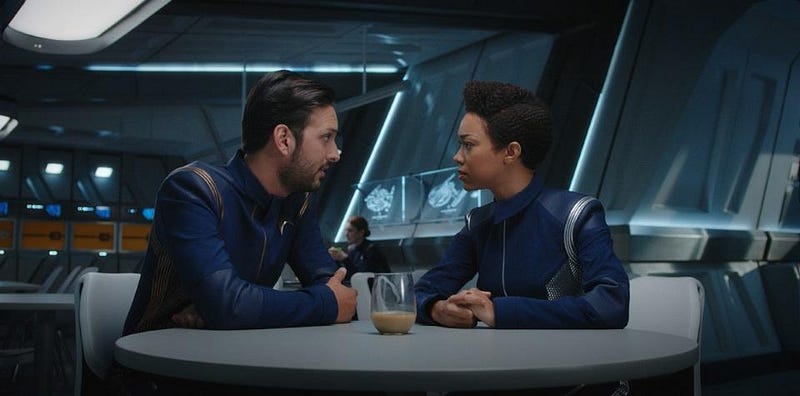
After a very rocky start to Star Trek: Discovery, where I have to admit I was extremely sour on the show after the first six episodes, the current direction is powerful and compelling. I don’t always agree with (or like) the characters, but when you put people in terrible situations, they don’t always act in an ideal fashion. This isn’t Picard’s Enterprise; this is the Federation at war, fighting for survival, and making difficult decisions in impossible situations. It’s all you can ask for, and I’m more curious than ever to see how the Terran Empire line plays out. Honestly, one of the most interesting things that could occur is for them not to make it home. This mirror-Universe timeline may be more interesting than anything playing out at home.
Ethan Siegel is the author of Beyond the Galaxy and Treknology. You can pre-order his third book, currently in development: the Encyclopaedia Cosmologica.
